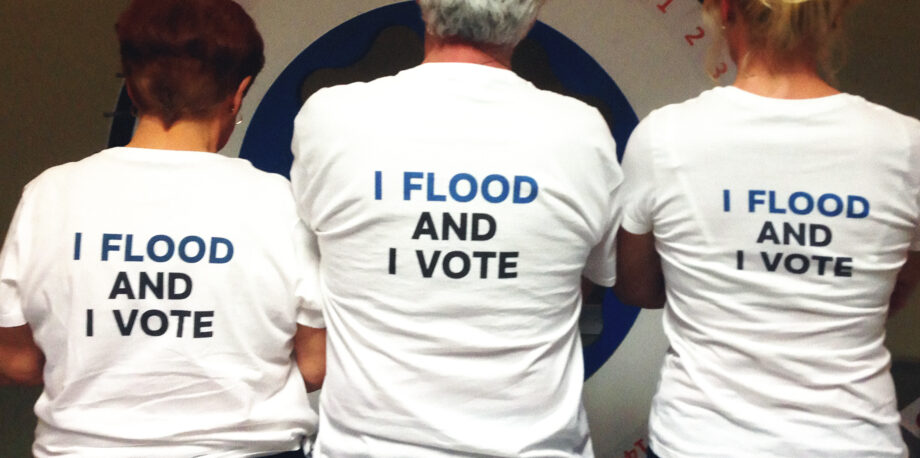ACROSS THE U.S., FLOOD SURVIVORS ARE GROWING IN NUMBER — AND THEY AREN’T JUST SEEKING RESTITUTION, BUT ANSWERS
As risk of floods increases, so does awareness and determination among flood survivors, who are no longer simply victims, but an ever-growing constituency for change.

Photo courtesy of Floodlothian Midlothian
April 23, 2019 — Susan Liley didn’t set out to become an activist. “A grandma, that’s all I am,” she says. But when her hometown of De Soto, Missouri, flooded four times in three years, Liley felt called to act.
After the first couple of floods, Liley did what she could do to help her neighbors: She dragged waterlogged furniture from a friend’s home and delivered eggs from her chickens to those without electricity. But the third time around, Liley says, “I got mad.”
Across the U.S., flood survivors are growing in number and — like Liley — they’re getting mad and fighting back. From city streets to subdivisions and trailer parks, they are comparing notes with neighbors and asking hard questions about the rising tide. They are messaging each other on Facebook, packing meeting halls and lawyering up. And, increasingly, they are seeking not just restitution, but answers. Flood survivors are identifying the root causes of repeated flooding and working toward solutions.
Most recently, their ranks were swelled by a March “bomb cyclone” in the Upper Midwest, which unleashed catastrophic flooding that was visible from space. According to the 2018 National Climate Assessment, climate change is driving more severe floods in many parts of the country.
Sea-level rise is inundating coastal cities, where “sunny-day flooding” is now a thing. Rising seas contribute to high-tide flooding, which has grown by a factor of five to 10 since the 1960s in many U.S. coastal communities — and that trend that is expected to accelerate in the future. Farther inland, increased rainfall is a major culprit.
…click on the above link to read the rest of the article…